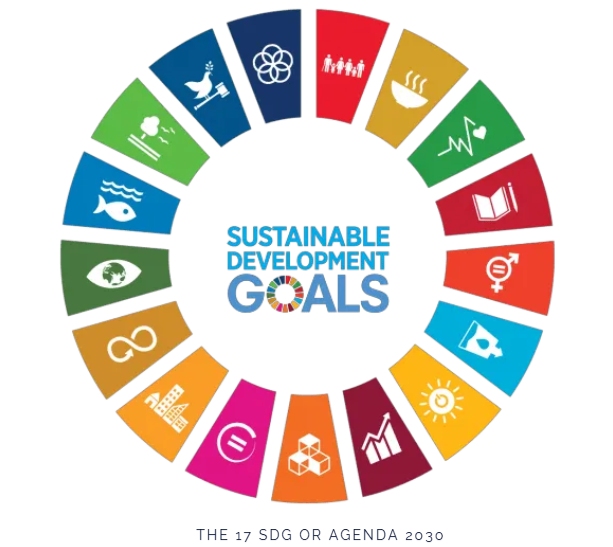The Sustainable Development Goals or Agenda 2030, or Global Goals, were adopted by all the members of the United Nations in 2015. 17 sustainable development goals were created with an aim to end poverty, tackle climate change, ensure peace and prosperity, and ensure protection of the planet by 2030.
The 17 sustainable development goals
1. No Poverty
2. Zero Hunger
3. Good Health and Well-being
4. Quality Education
5. Gender Equality
6. Clean Water and Sanitation
7. Affordable and Clean Energy
8. Decent Work and Economic Growth
9. Industry, Innovation, and Infrastructure
10. Reduced Inequalities
11. Sustainable Cities and Communities
12. Responsible Consumption and Production
13. Climate Action
14. Life Below Water
15. Life on Land
16. Peace, Justice, and Strong Institutions
17. Partnerships for the Goals
SDG and India
In India, the nodal institution for achieving the Sustainable Development Goals is NITI Aayog. A competitive environment among all states and union territories of India is created by the NITI Aayog, as it monitors the performance of the state and union territories through SDG India Index, North Eastern Region District SDG Index, Multidimensional Poverty Index.
Index Report
The SDG India Index Report, released by NITI Aayog, monitors the performance of all States and UTs, benchmarking them based on their overall achievements across various goals
The North-Eastern Region District SDG Index, was launched by NITI Aayog, which monitors the performance of districts across the eight north-eastern states.
Moreover, the National Multidimensional Poverty Index released by NITI Aayog also plays an important function in looking into the progress towards the target. Two of the Sustainable Development Goals (SDGs) has the aim of reducing the proportion of men, women and children of all ages living in poverty in all its dimensions to half the number. The State, Union Territory, and District-level data received from this Index in poverty of all dimensions, allow governments to make and regulate policies and schemes accordingly.
All 36 State Governments and Union Territory Administrations in India have targets and subsequent impacts. 62 SDG Indicators are selected by the, Ministries of Government of India (GoI), States/UTs, NITI Aayog, based on which the performance of the States/UTs are checked and ranked.
Other Important
Which Assam district ranked highest in the North East SDG Index 2023–24?
Dibrugarh was the top-ranking district in Assam but stood 17th among 121 districts in the Northeast SDG Index.
Mizoram’s Hnahthial district ranked first overall. The index tracks progress toward Sustainable Development Goals at the district level.
Assam’s South Salmara ranked 118th.
The report was prepared by NITI Aayog, DoNER, and UNDP.
What are the five P’s or five Pillars of Sustainable Development?
1. People
2. Prosperity
3. Planet
4. Partnership
5. Peace
What were the Eight Millennial Development Goals?
These goals are adopted in 2000 to improve living conditions by 2015, by the United Nations. The eight MDG are:
1) Eradicate extreme poverty and hunger
2) Achieve universal basic education
3) Promote gender equality and empower women
4) Reduce child mortality
5) Improve maternal health
6) Combat HIV/AIDS, malaria, and other diseases
7) Ensure environmental sustainability
8) Develop a global partnership for development.





